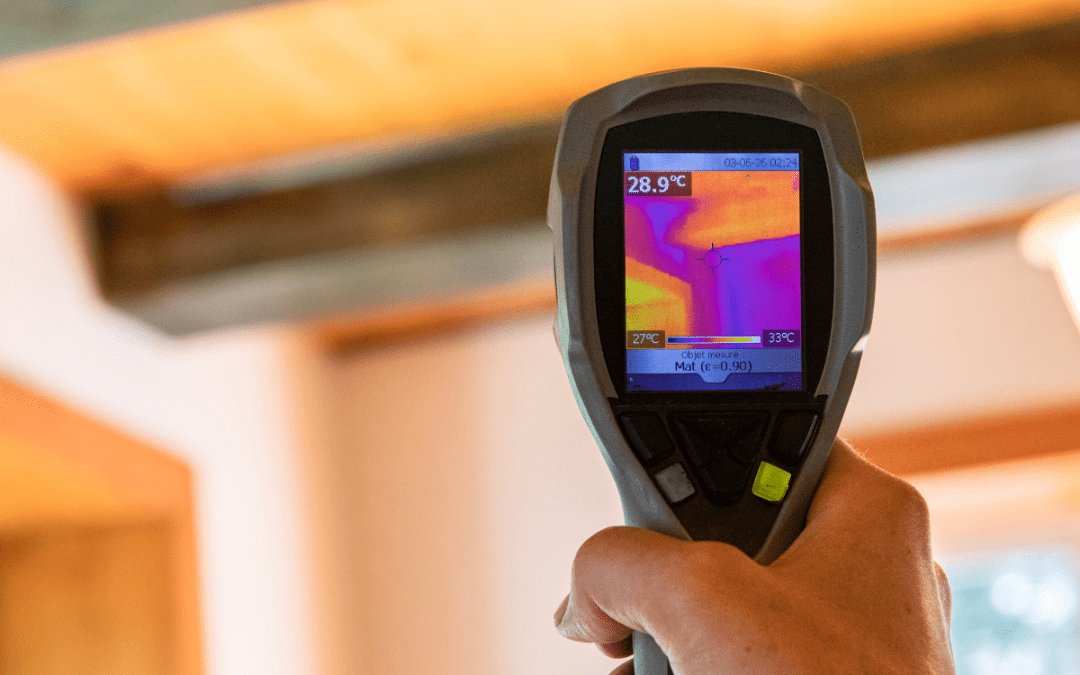IAQ measures are just one more thing you can advise clients on to ensure their health and safety when buying a home, as well as throughout their time in that property.
It’s also great to have an up-to-date IAQ report when selling a property to show that care was taken when it comes to IAQ, particularly as it pertains to mould and volatile organic compounds (VOCs). This doesn’t just apply to older homes, either, since poor air quality can happen for a number of reasons.
What’s included in IAQ testing
IAQ testing is an affordable service that provides a summary report, which will help your clients quickly determine the condition of the air in the home and whether any areas require additional sampling. IAQ measurement looks at such things as mould presence and VOCs like the burning of fuels such as gas, wood and kerosene, as well as tobacco products.
Mould sampling and lab work are expensive and often unnecessary. Instead, your clients can often opt for an air quality and mould detection survey – a thorough and less expensive alternative.
Because you can’t often see or smell mould and air contaminants, IAQ testing measures particulate matter, including mould spores, in every room of the house, pinpointing any problem areas so they can be remedied.
What are VOCs?
VOCs are gases released by many indoor sources that evaporate at room temperature. Concentrations of most VOCs are higher in indoor air than outdoor air.
In addition to VOCs that come from the burning of fuels such as gas, wood and kerosene, as well as tobacco products, they can also be present in the air thanks to personal care products, including perfume and hair spray, cleaning agents, dry cleaning fluid, paints and paint thinner, lacquers, varnishes, hobby supplies, alcohols, vinegars, and copying and printing machines.
Elevated VOC levels could be caused by a mould infestation, gas leaks, or off-gassing of building materials and is a concern for overall IAQ. These compounds are what produce that musty smell associated with the existence of mould in a home. They can also include a number of toxic compounds such as benzene, toluene and formaldehyde.
VOCs can be released from products during use and even in storage, but the amount of VOCs emitted from products tends to decrease as the product ages.
Health effects of VOCs
VOCs can cause eye, nose and throat irritation, shortness of breath, headaches, fatigue, nausea, dizziness and skin problems. Higher concentrations may cause irritation of the lungs, as well as damage to the liver, kidney or central nervous system. Some VOCs are even suspected of causing cancer.
The health effects caused by VOCs depend on the concentration and length of exposure to the chemicals. Most people are not affected by short-term exposure to low levels of VOCs found in homes, while others may be more sensitive, such as people with asthma and other health issues.
Having a home’s IAQ tested is a great way for your clients to better understand how healthy the air their family is breathing is and any steps they can take to make sure all occupants remain as healthy as possible.

Darci Campbell is a Regional Owner and member of the National Leadership Team at A Buyer’s Choice Home Inspections, as well as the owner of multiple businesses. As a Canadian businesswoman, entrepreneur and investor, she’s driven by helping other entrepreneurs grow their companies through creative thinking and consistent efforts. She can be reached through the company’s website.



















Hi
Your article makes sense to me and as a Realtor I would like to share your article, what equipment we need to install or how do we generate this report.